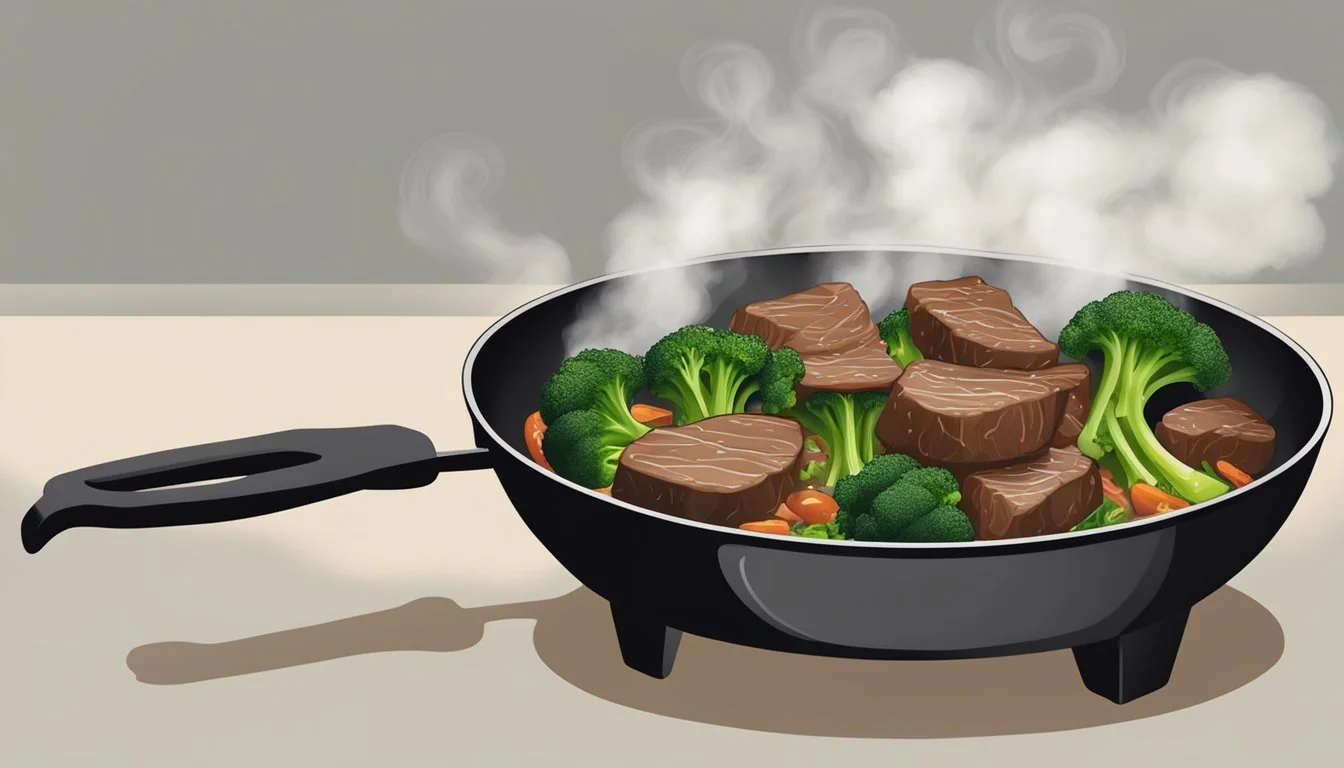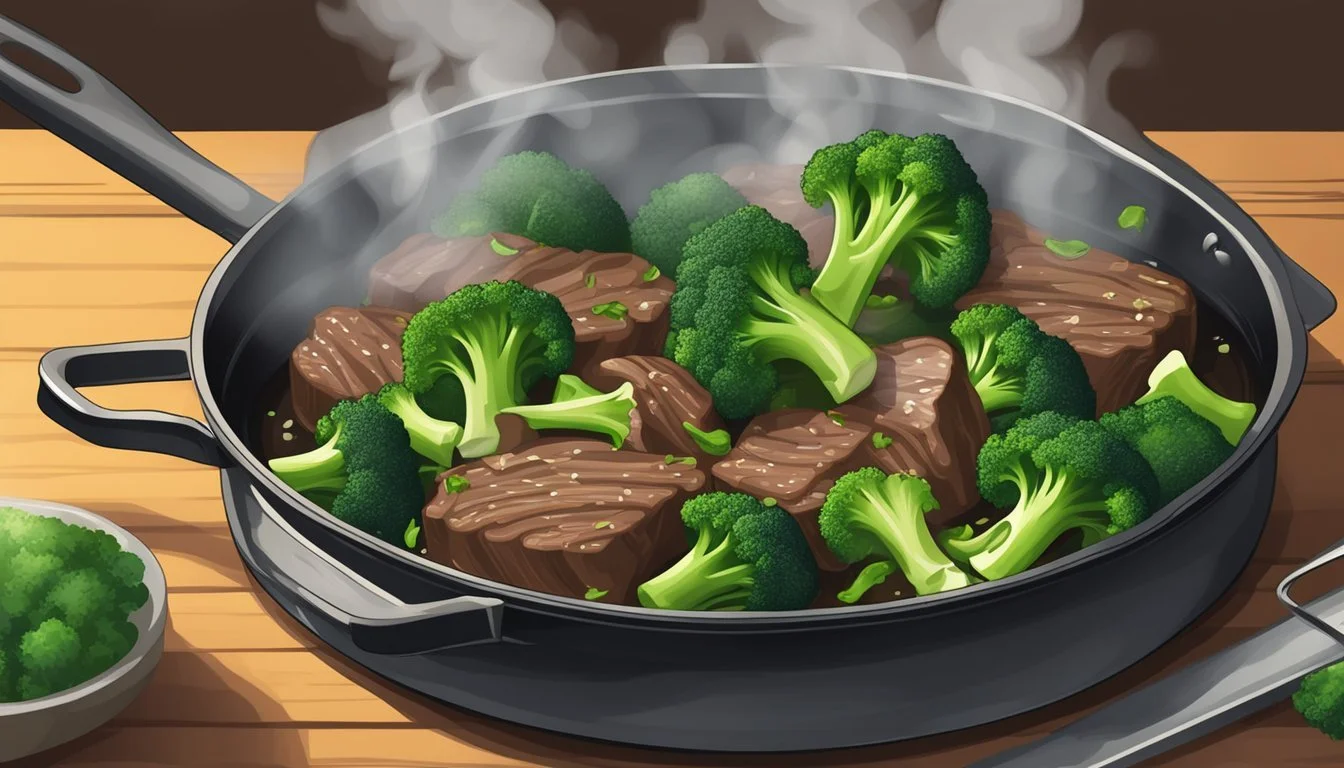Best Way to Reheat Beef and Broccoli
Ensuring Optimal Texture and Flavor
Reheating beef and broccoli involves a careful balancing act to preserve the meat's tenderness and the vegetable's crispness. The key to success lies in the method chosen to warm up the dish without overcooking it. Conventional reheating techniques may often lead to soggy broccoli or tough beef, but with the proper approach, it is possible to restore the meal's fresh-cooked appeal.
The oven method, for one, has been tried and tested for its reliability in reheating beef while retaining its juiciness. The process typically involves setting the oven to a low temperature, around 225 degrees Fahrenheit, to gently warm the food through. By adding a small amount of water or beef broth to the tray and covering it with foil, moisture is retained, preventing the beef from drying out. Meanwhile, for the broccoli component, short bursts of the microwave with added water can refresh its warmth without turning it limp, provided attention is paid to not overheat it.
Choosing the right reheating method for beef and broccoli not only affects taste but also impacts texture. To enjoy the dish as if it were freshly prepared, one must strike a delicate balance between a moist, warm environment for the beef and a swift, gentle heating for the broccoli. Thus, the combination of these techniques could be the most efficient way to enjoy leftovers that are as satisfying as the original meal.
Understanding the Basics of Reheating Beef
Reheating beef to preserve its tenderness and doneness requires precise temperature control and an understanding of how heat affects the meat's texture.
Importance of Temperature Control
Temperature control is crucial to prevent overcooking beef when reheating it. The goal is to reach an internal temperature that warms the beef without further cooking it. For example, if reheating beef that was initially cooked to a medium-rare doneness, one should aim to heat it to just below 135°F, which is the standard for medium-rare. Using a thermometer to check the internal temperature ensures accuracy and maintains the beef's tenderness.
Reheating Beef to Achieve Desired Doneness
Bringing beef to the desired level of doneness is imperative when reheating. For cuts best enjoyed at a medium level of doneness, aim for an internal temperature ranging from 140°F to 145°F. The key to reheating is in using gentle heat sources like an oven set to low temperature, to gradually increase the internal temperature. This slow process helps retain the juiciness and tenderness of the beef without crossing into the well-done territory.
Preparation Steps Before Reheating
Proper preparation of leftover beef and broccoli is crucial for maintaining the tenderness of the meat and the crunchiness of the broccoli. Two key steps must be taken before the actual reheating process begins: bringing the beef to room temperature and preheating the needed equipment.
Bringing Beef to Room Temperature
One should allow the leftover beef to sit out of the refrigerator for a brief period before reheating. For cuts like beef tenderloin, filet mignon, or roast beef, this step is particularly important.
Duration: 20-30 minutes
Purpose: To ensure even reheating and prevent the beef from becoming tough
Preheating the Necessary Equipment
Whether using an oven or a skillet, preheating is a must to achieve optimal reheating conditions.
For Oven Use:
Temperature: Preheat to 250°F (121°C) for beef tenderloin or filet mignon, ensuring a gentle reheat.
Duration: Allow the oven to reach the desired temperature before placing the meat inside, usually taking about 10-15 minutes.
For Skillet Use:
Temperature: Heat the skillet to a medium level.
Indicator: The skillet should be hot enough that water droplets sizzle upon contact.
By following these specific guidelines, one readies the beef and broccoli for a reheating process that aims to preserve quality and flavor.
Reheating Methods for Best Results
To ensure that beef and broccoli retain their tenderness and crunch when reheated, one must use the appropriate technique aligning with the dish's needs. The methods provided here emphasize maintaining the dish's original flavor and texture.
Oven Reheating Technique
For the oven method, a preheated oven and the use of aluminum foil are key. Set the oven to a low temperature, around 250 degrees Fahrenheit, to gradually warm the beef without overcooking. Wrap the beef in foil to preserve the moisture and place it on a baking sheet to heat evenly. For the broccoli, if it was roasted, reheat it alongside the beef, but only for a few minutes to avoid sogginess.
Stovetop Reheating Approach
Utilizing a hot skillet can yield juicy, well-textured beef. Start by heating a skillet over low heat. Add a small amount of olive oil or stock to create a thin layer of liquid at the bottom, providing steam to keep the beef moist. Place the beef in the skillet and cover it loosely with a lid or aluminum foil. Add the broccoli during the last couple of minutes to refresh its crunch.
Sous Vide Reheating Strategy
Sous vide is ideal for achieving precise temperature control. Place the beef in an airtight container or plastic wrap and submerge it in a water bath preheated by a sous vide machine to just below the original cooking temperature. This method ensures the beef remains tender and juicy. Broccoli should not be reheated this way as it may become too soft.
Microwave Reheating Tips
To reheat in a microwave, place the beef and broccoli in a microwave-safe dish. Cover with a damp paper towel to promote steam creation, which helps maintain moisture. Use a lower power setting and short intervals, checking periodically to prevent overcooking. This method is quick but less consistent in preserving the ideal texture and flavor of the dish.
Safeguarding Quality and Moisture
To ensure reheated beef and broccoli maintain their tenderness and crunch, specific techniques focusing on moisture retention and careful heating are essential.
Covering and Wrapping Techniques
Wrapping the leftover roast beef tightly in foil helps to keep the moisture intact during the reheating process. When reheating the beef in the oven, it can be beneficial to place the foil-wrapped meat on a baking tray. This method reduces moisture loss and helps in retaining a tender texture.
Foil-Wrapping: Enclose beef slices to trap moisture.
Baking Tray: Use to support the foil-wrapped beef.
Utilizing Liquids for Moisture Retention
Adding a small amount of beef broth or the juices from the original cooking process to the beef before reheating can enhance moisture retention. When reheating leftover beef tenderloin, a small amount of gravy or beef broth can be added to keep the meat succulent and flavorful.
Beef Broth/Gravy: Add a splash onto the beef.
Residual Heat and Resting Period
Using residual heat by removing the beef from the oven just before it's completely reheated and letting it rest allows the whole roast to finish heating evenly. This prevents overcooking and ensures the juices redistribute within the meat. A meat thermometer can be a helpful tool to monitor temperature without having to cut into the meat. Roast beef should be allowed to rest, tented under foil, to finish warming up to the desired temperature.
Meat Thermometer: Ensure proper internal temperature (around 120°F or 49°C for rare).
Resting: Allow the meat to sit, covered, to distribute juices evenly.
Serving Reheated Beef
When reheated beef is served at the optimal temperature, it retains its succulent qualities, offering rich flavor and juiciness. The slices, whether they be from round or pot roasts, should be served with complementary sides or integrated into dishes that accentuate the beef's tenderness.
Appropriate Pairings and Condiments
Serve medium or medium-rare beef slices with:
Gravy or Sauce: Enhance the beef's moisture with a warm gravy or a flavorful sauce.
Starches: Pair with rice, potatoes, or rustic bread (What wine goes well with bread?) to soak up the beef juices.
Condiments that complement the flavor profile:
Horseradish: Offers a spicy kick that counters the richness of the beef.
Mustard: A classic condiment that brings tanginess to the pairing.
Creative Ideas for Leftover Beef
Repurpose medium-rare or medium beef slices into:
Tacos:
Shred the beef and serve in a soft tortilla with fresh salsa and avocado.
Use bold spices to offset the richness of the meat.
Lay slices on crusty bread with caramelized onions and a smear of horseradish cream.
Keep the sandwich open-faced to maintain the bread's texture.
Salads:
Slice beef thinly and garnish a salad of greens for a protein-packed meal.
Dress lightly to let the flavor of the beef shine through.
Tips for Storage and Food Safety
To ensure beef and broccoli remains safe and delicious when reheated, one must follow strict storage and food safety guidelines; proper cooling, storing, and eventually freezing are essential steps in this process.
Proper Cooling and Storing Methods
Cooling: Beef and broccoli should be cooled to room temperature within two hours of cooking to prevent bacterial growth. Once cooled, promptly move to the next step of storage.
Storing:
Place the beef and broccoli in an airtight container or plastic bag.
Ensure the refrigerator is set below 40°F to maintain the safety of the dish.
Label the container with the current date; beef and broccoli should be consumed within 3-4 days when stored in the refrigerator.
Freezing and Thawing Guidelines
For longer storage, wrapping the dish in plastic and placing it into a vacuum-sealed bag can keep it safe for 2-3 months.
Freeze as quickly as possible to preserve quality.
Thawing:
When ready to reheat, thaw beef and broccoli in the refrigerator overnight rather than at room temperature to minimize the risk of bacterial growth.
If a quicker method is necessary, use a microwave on the defrost setting, ensuring that the food is reheated to an internal temperature of 165°F before consumption for optimal food safety.
FAQs About Reheating Beef
Reheating beef, when done properly, preserves its tenderness and ensures that it remains a delightful meal. This section addresses common concerns and offers expert recommendations to achieve optimal reheating results.
Addressing Common Concerns
Q: Can reheated beef be as tender as when it was first cooked?
A: Yes, if the proper method is chosen based on the cut and desired doneness, reheated beef can retain much of its tenderness.
Q: What is the best method to reheat beef to keep it tender?
A: The gentle heat of a low-temperature oven is frequently recommended by chefs, especially for medium-rare roasts or beef tenderloin.
Q: Should I slice the beef before reheating?
A: For even heating, it's generally best to slice the beef. However, larger cuts can be reheated whole if they're not too thick.
Q: Can I use a microwave to reheat beef?
A: While a microwave is faster, it can unevenly heat the beef and toughen it. Using a sous vide method is an alternative for a more even and gentle reheating.
Expert Recommendations for Optimal Results
For Medium Rare Roasts:
Preheat oven to 250°F (120°C).
Wrap beef in foil to retain moisture.
Place in oven; heat until it reaches the desired internal temperature, usually just below 120°F for medium-rare.
For Beef Tenderloin or Thicker Cuts:
Sous vide is an optimal method. Reheat at a temperature that corresponds to the desired doneness. For medium-rare, a water bath set to 130°F to 135°F ensures gradual reheating without overcooking.
Quick Tips:
Always let beef rest after reheating to distribute the juices.
Utilize a thermometer for precise temperature control.
To maintain crunch in components like broccoli, reheat it separately from the beef to avoid overcooking.
Using these methods, one can confidently reheat beef, achieving a balance between maintaining tenderness and reaching the desired warmth, ready for a satisfying meal.




